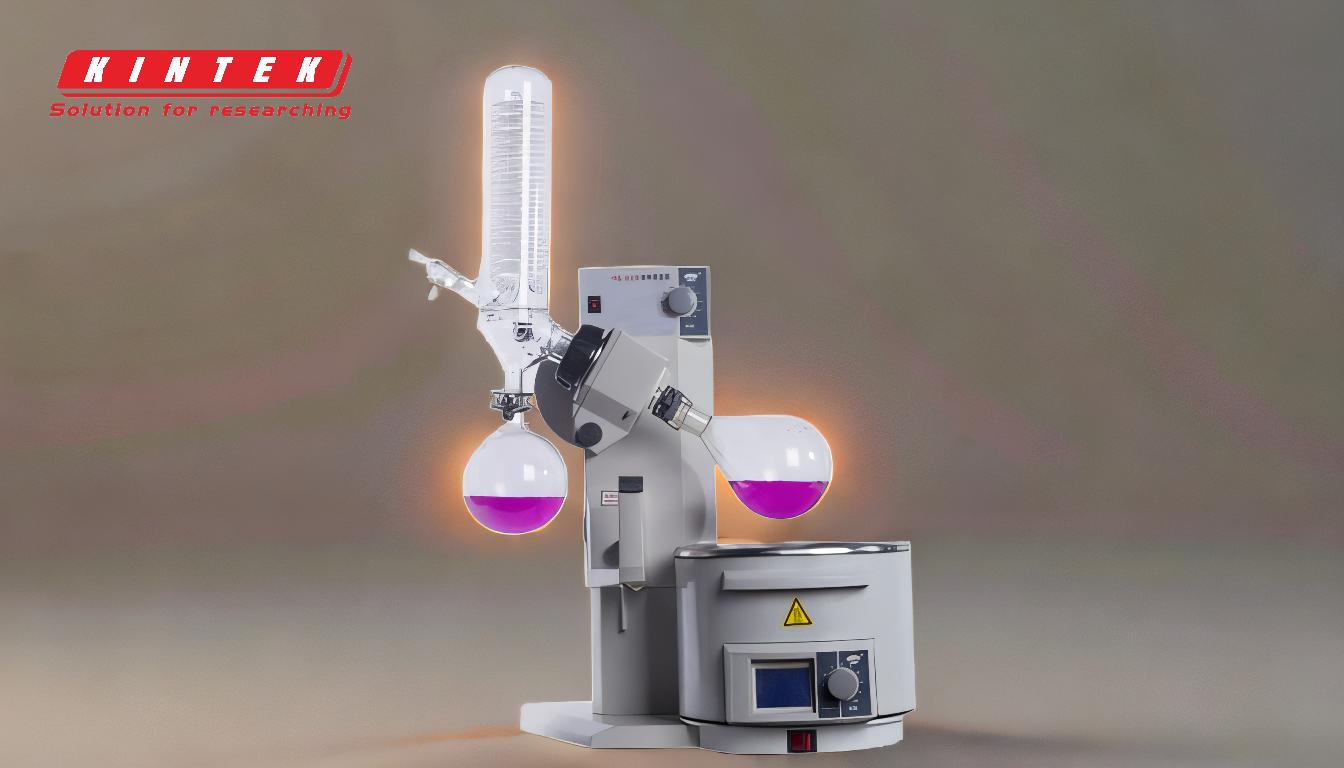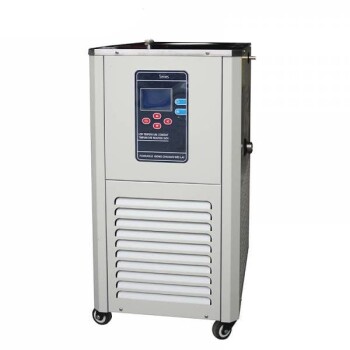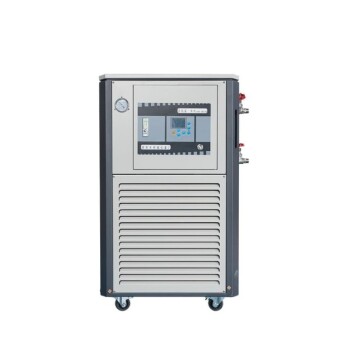A rotary vacuum evaporator is a complex piece of laboratory equipment used for efficient and gentle removal of solvents from samples through evaporation. It consists of several key components that work together to achieve this process. The main parts include the motor unit, vapor duct, vacuum system, heated fluid bath, condenser, condensate-collecting flask, and a mechanical or motorized mechanism. These components are designed to rotate the sample flask, apply heat, reduce pressure, and condense the evaporated solvent for collection. The system often includes additional supporting equipment such as a vacuum pump, chiller, and vacuum controller to optimize the evaporation process.
Key Points Explained:

-
Motor Unit:
- The motor unit is responsible for rotating the evaporation flask. This rotation increases the surface area of the liquid, promoting faster and more uniform evaporation.
- It ensures that the sample is evenly exposed to heat and vacuum conditions, which is crucial for efficient solvent removal.
-
Vapor Duct:
- The vapor duct serves as the axis of rotation for the sample flask and acts as a vacuum-tight conduit for the vaporized solvent.
- It connects the rotating flask to the condenser, ensuring that the vapor is efficiently transported for condensation.
-
Vacuum System:
- The vacuum system, typically consisting of a vacuum pump and tubing, reduces the pressure inside the system. Lowering the pressure lowers the boiling point of the solvent, allowing it to evaporate at lower temperatures.
- This is particularly important for heat-sensitive samples that could degrade at higher temperatures.
-
Heated Fluid Bath:
- The heated fluid bath, usually a water bath, provides controlled heating to the sample flask. The heat accelerates the evaporation process by supplying the necessary energy to convert the solvent into vapor.
- The temperature of the bath can be precisely controlled to suit the specific requirements of the sample and solvent.
-
Condenser:
- The condenser is responsible for cooling the vaporized solvent, converting it back into a liquid form. It typically consists of a coil through which coolant circulates or a "cold finger" that provides a cold surface for condensation.
- Efficient condensation ensures that the solvent is collected without loss, which is crucial for accurate measurements and sample recovery.
-
Condensate-Collecting Flask:
- The condensate-collecting flask is where the condensed solvent is collected after passing through the condenser. It is designed to be easily removable for emptying or further analysis.
- This flask is an essential part of the system for recovering and quantifying the solvent.
-
Mechanical or Motorized Mechanism:
- This mechanism allows for the controlled lifting and lowering of the evaporation flask into and out of the heated bath. It ensures that the flask can be quickly removed from the heat source to prevent overheating or boiling over.
- It also aids in the safe handling of the flask, especially when dealing with hazardous or volatile substances.
-
Supporting Equipment:
- Vacuum Pump: Essential for creating and maintaining the vacuum within the system. It is often a separate unit connected via tubing.
- Chiller: Provides the coolant needed for the condenser. It ensures that the condenser operates at the optimal temperature for efficient condensation.
- Vacuum Controller/Regulator: Allows for precise control of the vacuum pressure, which is crucial for maintaining consistent evaporation conditions.
Each of these components plays a critical role in the overall functionality of the rotary vacuum evaporator. Together, they enable the efficient and gentle removal of solvents, making the rotary evaporator an indispensable tool in many laboratory settings, particularly in chemistry and biochemistry.
Summary Table:
| Component | Function |
|---|---|
| Motor Unit | Rotates the flask to increase surface area for faster, uniform evaporation. |
| Vapor Duct | Acts as a vacuum-tight conduit for vaporized solvent to the condenser. |
| Vacuum System | Reduces pressure to lower the solvent's boiling point. |
| Heated Fluid Bath | Provides controlled heat to accelerate evaporation. |
| Condenser | Cools vaporized solvent, converting it back to liquid for collection. |
| Condensate-Collecting Flask | Collects condensed solvent for recovery and analysis. |
| Mechanical/Motorized Mechanism | Lifts/lowers the flask for safe handling and heat control. |
| Supporting Equipment | Includes vacuum pump, chiller, and vacuum controller for optimal operation. |
Discover how a rotary vacuum evaporator can enhance your lab processes—contact us today for expert advice!






















